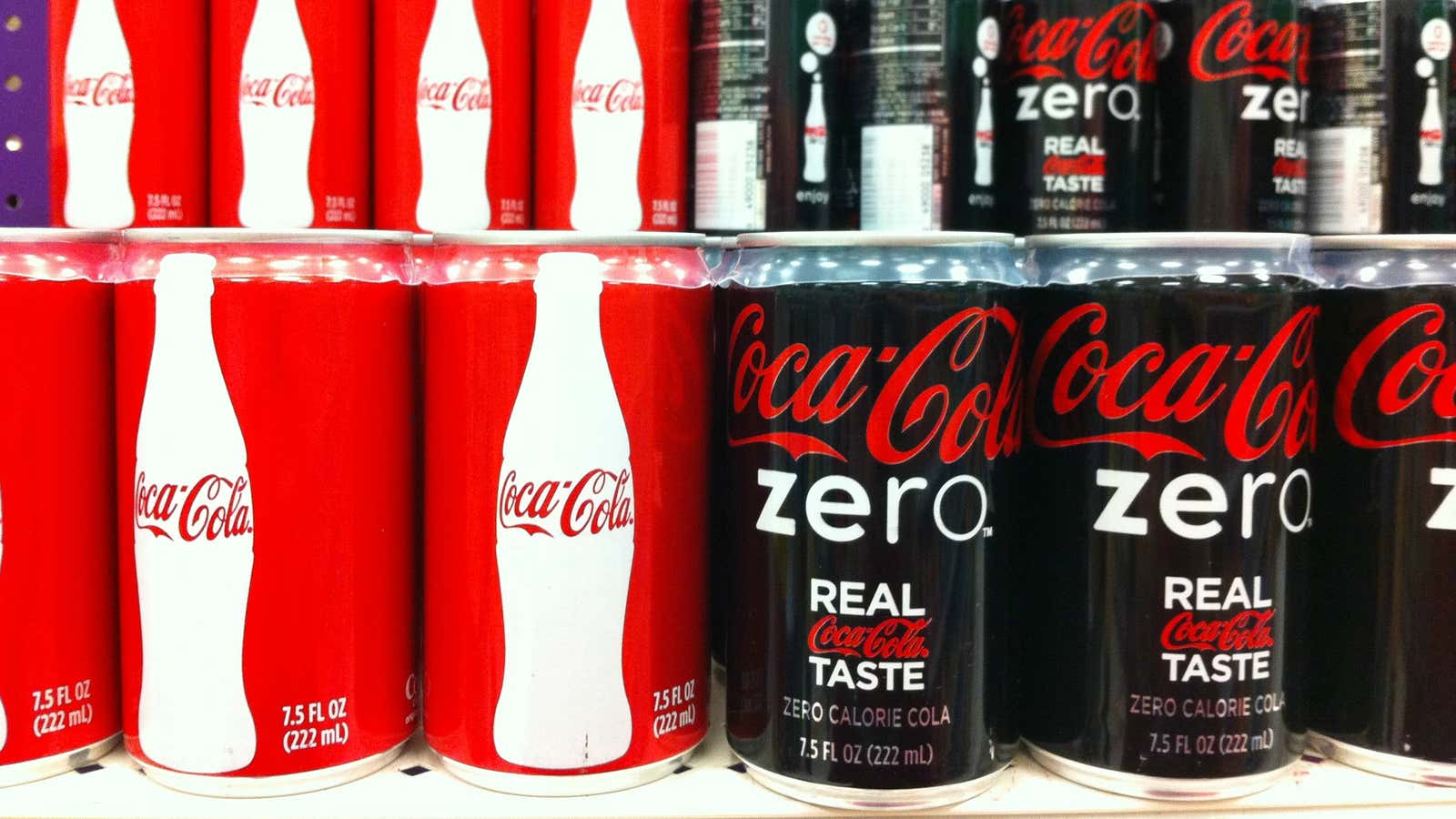Turns out, smaller works great for massive food companies.
Coca-Cola, McDonald’s and Nabisco, among others, are selling more products in single-serving sizes to cater to two trends: People want to limit the amount of sugar and fat they are eating, according to Euromonitor; and consumers want more convenient ways to consume food.
The upside: Companies are noting sales boosts and finding they can charge more per unit of volume.
Breakfast drinks are being sold in smaller cartons and bottles for consumers who live on-the-go lifestyles. In Europe and the US, cereal companies are making cereal products easier to snack on without the need for milk and bowls. McDonald’s is testing a Mac Jr. (a punier Big Mac), Nabisco is producing Oreo Thins and even Starbucks has toyed with temporarily bringing back miniaturized Frappuccinos.
PepsiCo and Coke have introduced namesake products in 7.5-ounce (222 ml) cans as they wage high-profile battles over the health implications of added sugars, product labeling and soda taxes.
“We realize that we need to go from offering choice to shaping choice,”said Coca-Cola COO, James Quincey, during a June 16 Deutsche Bank call with investors. “We need to use the ability of our system…to provide a portfolio of products that encourage and enable consumers to enjoy added sugar responsibly.”
Offering foods in smaller packaging lets companies plug their products with an eye toward health. It also allows them, at least in the case of the soda companies, to charge more per fluid ounce, Linda Montag, a senior analyst at Moody’s has said.
“Reduction in pack size is not exclusive to single-serve sizes, there is also evidence of family packs shrinking in size…to suit smaller households in Europe seeking to regulate a bit more how much of their favorite carbonated soft drink they consume,” according to Euromonitor.
It remains to be seen whether smaller packaging will get people to eat less and improve their health. Humans are notoriously bad at knowing when to stop eating, but some research shows that when people get to the bottom of a small-sized snack, they stop chomping. On the flip-side (paywall), Hershey’s told The Wall Street Journal that its customers aren’t eating more in a single sitting, but they are eating more often.
Only time will tell.




